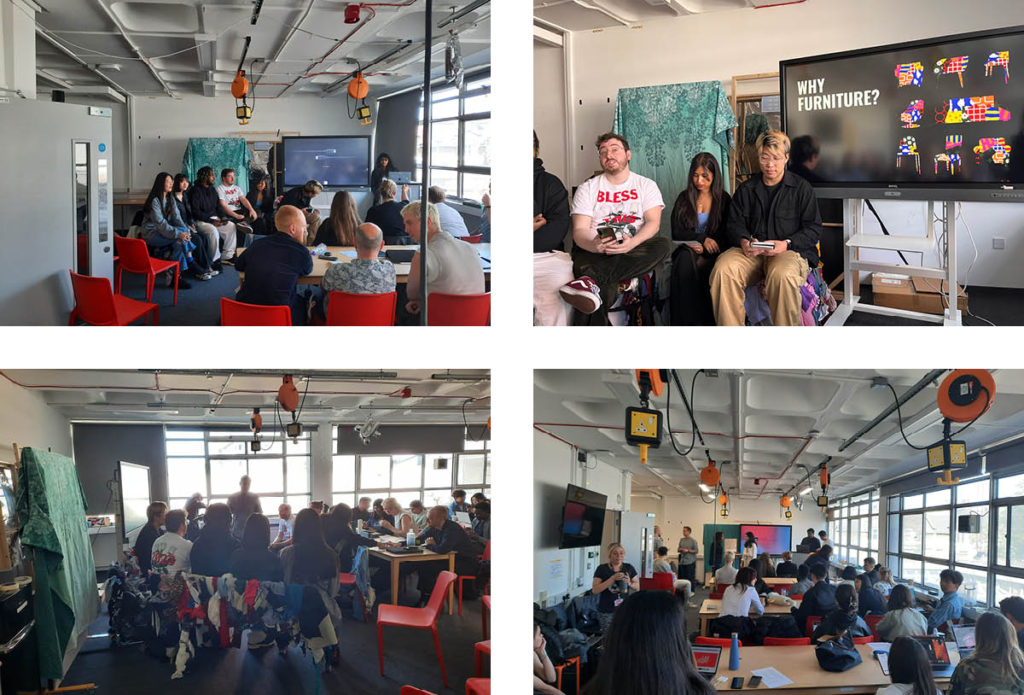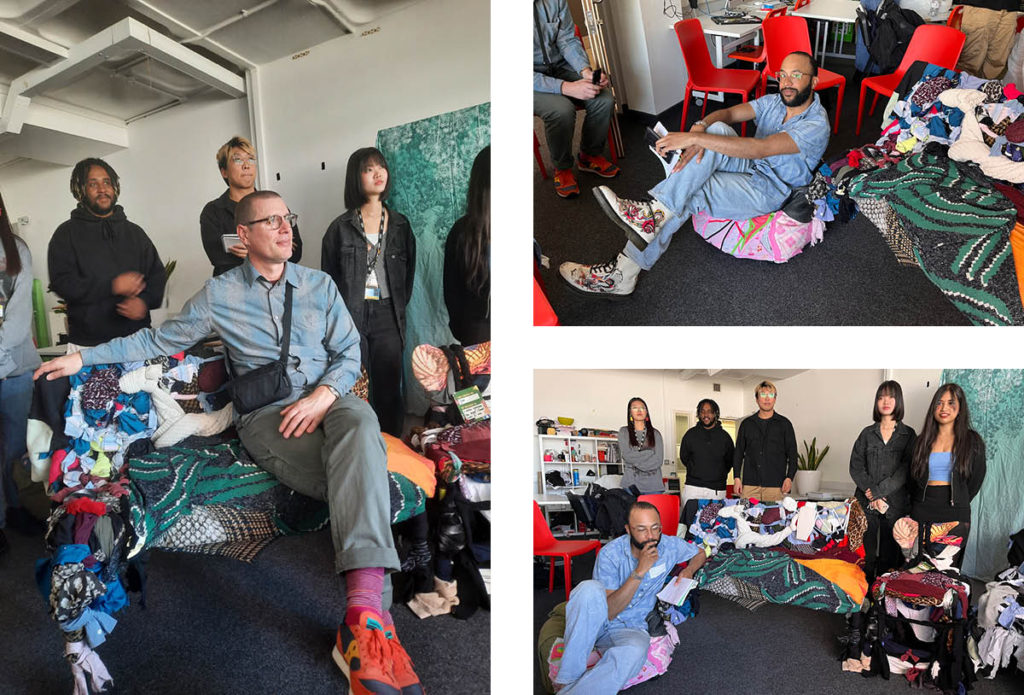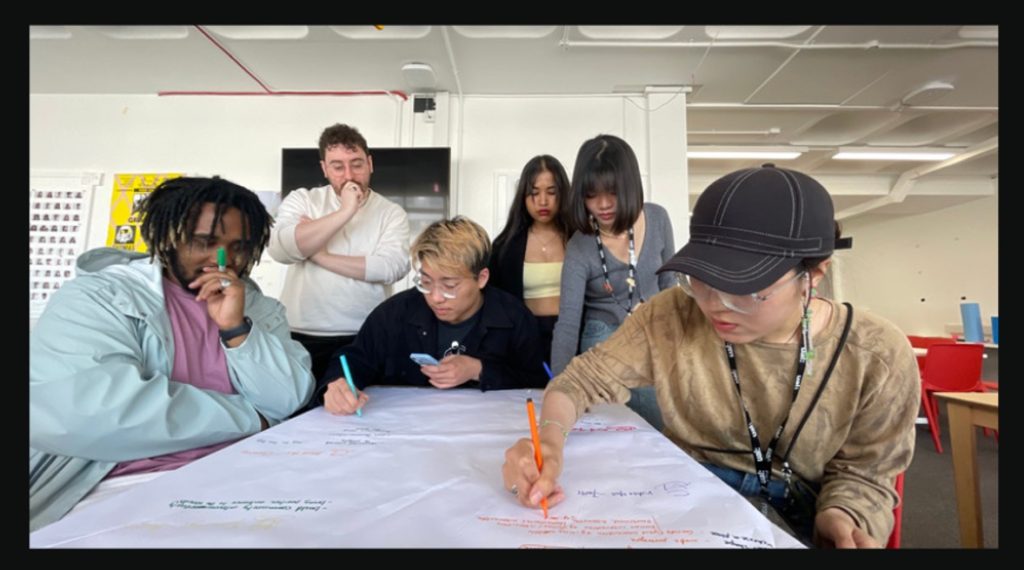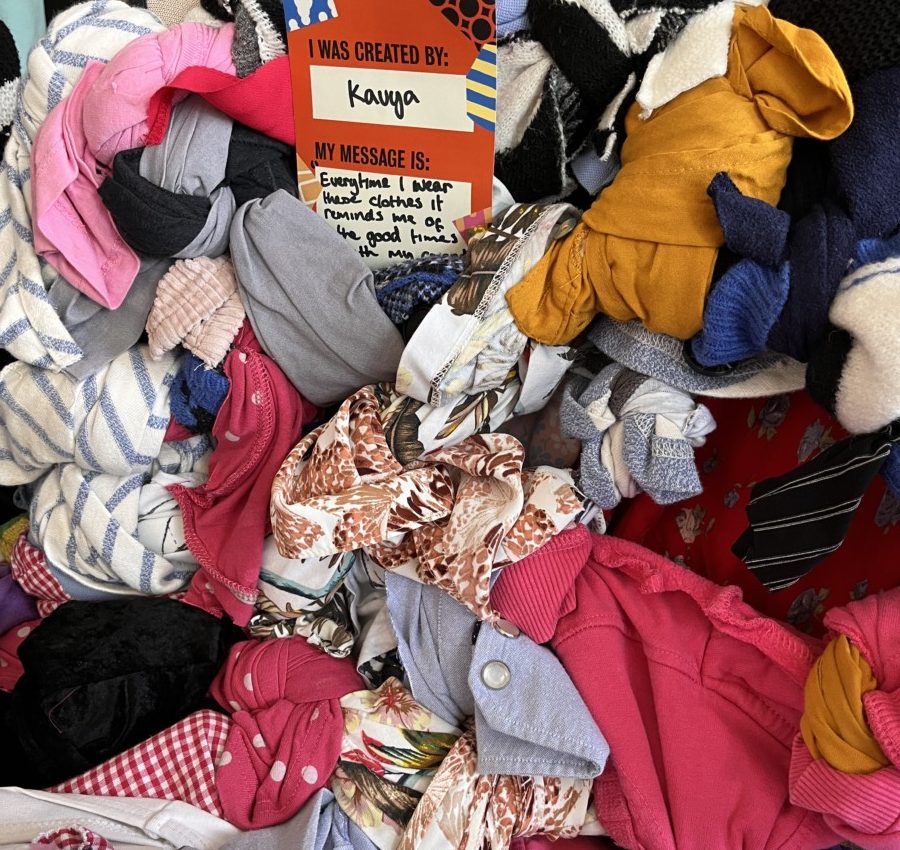Written by:
Between April and June this year we worked with University of Arts London: London College of Communications (LCC) and their MA User Experience Design (UX) postgraduate students. This was a new partnership for The Glass-House and offered us a great opportunity to make new connections and start new conversations with students who are studying a subject outside of the built environment. We saw this project as a way of extending our WEdesign project, enabling us to move one of the propositions that emerged from our events, taking it from a visual representation of the proposition for change to a real product or experience. We were excited to see what the students would create to give our WEdesign ideas life!

Working with LCC tutors, we gave the students the brief ‘Design a way to transform a public place into a feminist space’, which was a provocation and theme that emerged from our Glasgow WEdesign event, delivered in partnership with students from Mackintosh School of Architecture at Glasgow School of Art.
The students worked collaboratively in small groups to research, design and make a 3D response to this brief. We wanted them to design something real which could enact change and disrupt inequalities ingrained in public spaces.
It was a challenging brief, but we felt it offered a rich seam for the students to explore and come up with an exciting response. An additional element of the brief was that whatever they designed had to be replicable, so the students also needed to consider how other people could use, evolve, and repurpose whatever they created in a different context.
We worked with the students throughout their project, with regular online meetings and in-person reviews before being invited back into the university to watch the final presentations. It was great to see how the students had approached this brief and we enjoyed their presentations, especially as each group had responded to the brief so differently.
One of the student groups who tackled our brief have shared their thoughts and experiences as part of this blog. They go through their process, explain their final outcome and detail how they found collaborating as a group.
This group’s playful response to the brief was a workshop called FeminiCity, which encouraged people to interact with public spaces using recycled clothing, which changed the space and made it more inviting and comfortable. They produced a workshop guide to instruct other groups in how to recreate this activity and provided real life examples which they showed during their presentation.

For The Glass-House, this was an enjoyable collaboration and we look forward to working with LCC and MA UX students in the future.
MA:UX – Right to the City
By Harry Solomons, Jumleena Bhagawat, Yanxu Chen, Weiting Chi, Xiyuan (Cyrus) Han, Kimberly Rodrigues and Jennoir Simpson.

We’re a group of students from the MA User Experience Design course at University of the Arts London. Our work is generally cross-disciplinary and socially oriented, working with external partners from across industries and sectors. For this brief, we were lucky enough to work with The Glass-House on a brief to turn a public space into a feminist space.
Of course, the first part of approaching this brief is to understand what a feminist space is. We started with book research, taking inspiration from Leslie Kern’s Feminist City: A Field Guide, where she sets out several key areas where gender discrimination manifests itself in urban space, including the more obviously apparent areas of safety and accessibility. We decided to contextualise this with spaces in London through a structured observation of hostile spaces. We also ran a series of short workshops on representation, access, and safety, which involved participants getting hands-on with making and re-designing their own spaces.
Our final outcome was FeminiCity: a workshop where we would invite participants from the local community to bring items of their own clothing, with which they will re-decorate and soften an existing hostile space. First, participants are invited to share a story they associate with their clothing, before combining it with other discarded clothes we have provided, and using this new material to dress their environment – wrapping sheets of fabric around bollards, covering railing spikes and anti-homeless architecture, or softening public seating. The end result of these workshops were visually striking symbols of a community reclaiming an unrepresentative space.
The brief was an excellent opportunity for us to investigate topics and methods of practice that arise less often in traditional UI/UX industry work. Our work was grounded in local community knowledge, and we were able to get hands-on with a making process that directly intervened in public space. This was also a great way for us to appreciate the power of clothing, as well as the crafting practices associated with it, as a design material, which had come up less often in our other work.
Working in such a large group with an incredibly wide variety of lived experience also came with its benefits, although it made certain aspects of the process challenging. We found ourselves able to commit to and produce larger quantities of work in shorter periods of time than would have been possible with a smaller team, but fundamental changes to our ideas were harder to decide upon – a strain that became immediately more apparent as outcome deadlines approached.
Communication was another area in which we sometimes hit roadblocks. As a team, we fought to cross gender, cultural and language barriers that arose, but we each found ourselves, at points, struggling to convey our exact intentions, often finding ourselves committing to ideas that we had varying interpretations of. However, in this process, we found strong elements of design inspiration. By looking at what we were able to accomplish when these communication barriers were brought down, we realised what could be achieved in a design where participants were encouraged to use their own public spaces to express themselves more freely.
While challenging, this brief was exceptionally rewarding, and a piece of work we are very proud of. These topics of equity and equality in public service will, undoubtedly, emerge in our future design practice, and the opportunity to work with The Glass-House on applying these fields to public interventions will prove incredibly valuable.
About the authors
- Jumleena Bhagawati – here
- Yanxu Chen – here
- Weiting Chi – here
- Xiyuan (Cyrus) Han – here
- Kimberly Rodrigues – here
- Jennoir Simpson – here
- Harry Solomons – here
Additional links
To find out more information about our WEdesign series ‘Relearning Place’, you can explore our publication and story.
Information about LCC MA User Experience Design here.
WEdesign is kindly supported by the Ove Arup Foundation.
